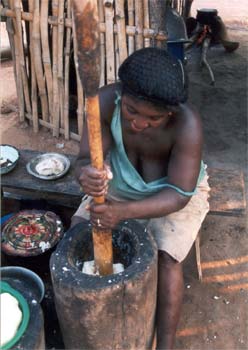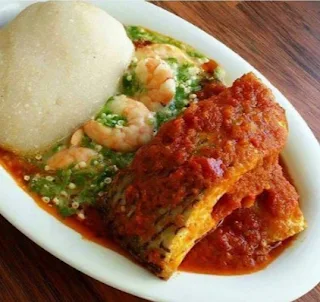How to Eat Fufu: Complete Guide to West African Staple Food
How to Eat Fufu: Complete Guide to West African Staple Food
Learn the proper way to eat fufu with traditional West African dining etiquette and recipes
What is Fufu?
Fufu is a staple food throughout Western and Central Africa, similar to what mashed potatoes are to traditional American cooking. This dough-like food is made by boiling starchy foods like cassava, yams, plantains, or rice, then pounding them into a smooth, gummy mass.
• African Cuisine Guide - Traditional dishes and cooking methods
• African Bread Basket - Staple foods and ingredients
For many Africans, stew and fufu is a classic meal combination, comparable to soup and crackers in Western cuisine. The neutral taste of fufu makes it the perfect accompaniment to flavorful African stews and soups.
How to Eat Fufu: Step-by-Step Guide
The Proper Technique
- Tear a small portion - Take a walnut-sized piece of fufu with your right hand
- Form a indentation - Use your thumb to make a small well in the fufu ball
- Scoop the stew - Use the fufu to scoop up stew or soup
- Swallow without chewing - Traditional fufu is swallowed whole with minimal chewing
- Save the meat - In West Africa, diners often eat the fufu and sauce first, saving the meat for last
Important Cultural Note
Always use your right hand only when eating fufu. Using your left hand is considered insulting and rude in many African cultures, as the left hand is traditionally reserved for hygiene purposes.
Types of Fufu Across Africa
Fufu can be prepared using various starchy ingredients depending on the region:
- West Africa: Cassava, yams, plantains
- Central Africa: Cassava, cornmeal
- East Africa: Plantains, potatoes
- Modern variations: Rice, millet, semolina
Traditional Plantain Cassava Fufu Recipe
Ingredients
- 3 green or yellow plantains
- 1 medium cassava root
- 2 tablespoons all-purpose flour
- 1 teaspoon salt
- 1/4-1/2 cup water
Instructions
- Peel and cut plantains and cassava into even pieces
- Place in large pot and cover with water
- Boil until soft, about 20 minutes
- Drain and transfer to a mixer
- Add salt and flour
- Whip until consistency of soft dough is achieved
- Add water gradually if needed
- Fufu should be stiffer than mashed potatoes

Fufu Eating Etiquette and Cultural Notes
Dining Customs
- Hand washing: Always wash hands before and after eating
- Right hand only: Strictly use your right hand for eating
- No utensils: Traditional fufu is always eaten by hand
- Communal eating: Often served from a shared bowl
- Respect hierarchy: Elders are typically served first
Common Fufu Accompaniments
Fufu is typically served with flavorful soups and stews such as:
- Groundnut soup (peanut soup)
- Light soup with fish or meat
- Palm nut soup
- Okra soup
- Egusi soup (melon seed soup)
Frequently Asked Questions
Can I eat fufu with utensils?
While traditional purists eat fufu only with their hands, modern adaptations sometimes allow utensils, especially in formal settings or for beginners. However, to experience the authentic cultural practice, try eating with your hands.
What does fufu taste like?
Fufu has a very mild, slightly starchy flavor that serves as a neutral base for the flavorful stews and soups it accompanies. The texture is dough-like and smooth.
Is fufu healthy?
Fufu is high in carbohydrates and provides energy. When made with nutritious ingredients like plantains and cassava, it offers vitamins and minerals. Balance it with protein-rich stews for a complete meal.
Explore and Understand Africa Through Her Food and Culture
Article by Chic African Culture | African Food, Fufu Recipe, West African Cuisine




























